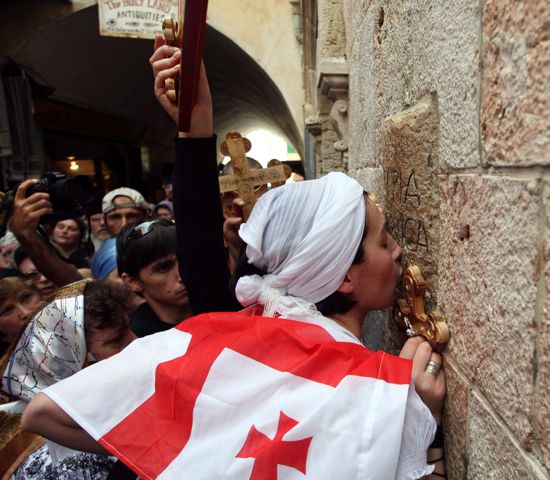
Pilgrimage has been part of the Christian tradition for centuries. A pilgrimage is a spiritual journey to a sacred place. The journey can be near or far — as close as a neighboring church or as distant as halfway around the world. It can be a day-trip, a 10- to 14-day excursion or any other duration.
Years ago, people went on pilgrimages in larger groups for safety, to protect themselves from bandits on unfamiliar roads in foreign lands. Today, many prefer to go in groups for ease in travel, to enjoy the benefit of a local guide, to have the opportunity to celebrate Mass and share in other forms of communal prayer, and to experience fellowship with other believers.
Why go?
There are a number of good spiritual reasons to make a pilgrimage. For many it is like a retreat, a time away from home and the regular routine to concentrate on the spiritual life without distractions — a time for prayer and meditation, learning and enrichment.
For others, it is a time of intercession, an opportunity to pray for a special intention or an occasion to offer thanksgiving for blessings received. Centuries ago, a pilgrimage was commonly assigned as a penance to make satisfaction for sins committed.
There are a number of things that a pilgrimage is not. It is not a vacation, a time to sit back, take it easy and relax. It is not a commercial tour, a time for sightseeing, entertainment, cultural experiences and fine dining. It is not a shopping trip, a time to go to specialty stores to get mementos and souvenirs for yourself and gifts for family and friends back home.
A pilgrimage normally has some of these elements, but the itinerary — the schedule of sites to visit and the activities to be done there — is designed around the spiritual goals and objectives of the trip.
The ultimate trip
There are three premier pilgrimages, trips that have been made by Christians for centuries, journeys of inestimable spiritual value.
The pilgrimage that ranks above all others is to walk in the footsteps of Jesus, to visit the Holy Land. Major sites include the birthplace of Jesus, Bethlehem; his childhood home, Nazareth; the location of his early ministry, Capernaum and the area around the Sea of Galilee; and his final destination, Jerusalem.
The second-most revered pilgrimage is to walk in the footsteps of St. Paul. He made three missionary journeys and covered an immense amount of territory in Turkey and Greece. The main sites are Ephesus in Turkey and Philippi, Thessalonica, Corinth and Athens in Greece.
Another excellent option is to visit the foundations of the church in Rome and Italy. There are four major pilgrimage churches in the Eternal City: St. Peter’s Basilica, St. Mary Major, St. John Lateran and St. Paul’s Outside the Walls.
Some authorities list seven pilgrimage churches and also include Santa Croce in Gerusalemme (Holy Cross in Jerusalem) in Rome; St. Lawrence outside the Walls; and St. Sebastian’s.
Other mainstays include a papal audience and a visit to the Vatican Museums. There are key spiritual destinations in the countryside, many which are associated with important saints: Assisi and Sts. Francis and Clare; Milan and St. Ambrose; Bologna and St. Dominic; Monte Cassino and St. Benedict; Siena and St. Catherine; and Padua and St. Anthony.
Other possibilities
Devotion to Mary is another important reason for a pilgrimage. The foremost Marian shrines are at Lourdes in France, Fatima in Portugal, Guadalupe in Mexico, Medjugorje in Bosnia, Czestochowa in Poland and Knock in Ireland.
There are many other highly-esteemed spiritual destinations: Santiago de Compostela in Spain; Notre Dame, Chartes, La Salette and Mont-Michel in France; Oberammergau and the great cathedrals of Munich and Cologne in Germany; Canterbury in England; Goa in India; Mount Nebo in Jordan; and Mount Sinai in Egypt.
Pilgrimages need not be to far-away places. A short trip can be made to a sacred site in one’s locality: a neighboring parish church, a shrine, the cathedral of the diocese, a monastery or convent, or a retreat house. Pilgrimages to holy places help us on the most important pilgrimage of all, our journey through our human life on earth to our eternal destination with God in heaven.
Father Michael Van Sloun is pastor of St. Stephen in Anoka.



